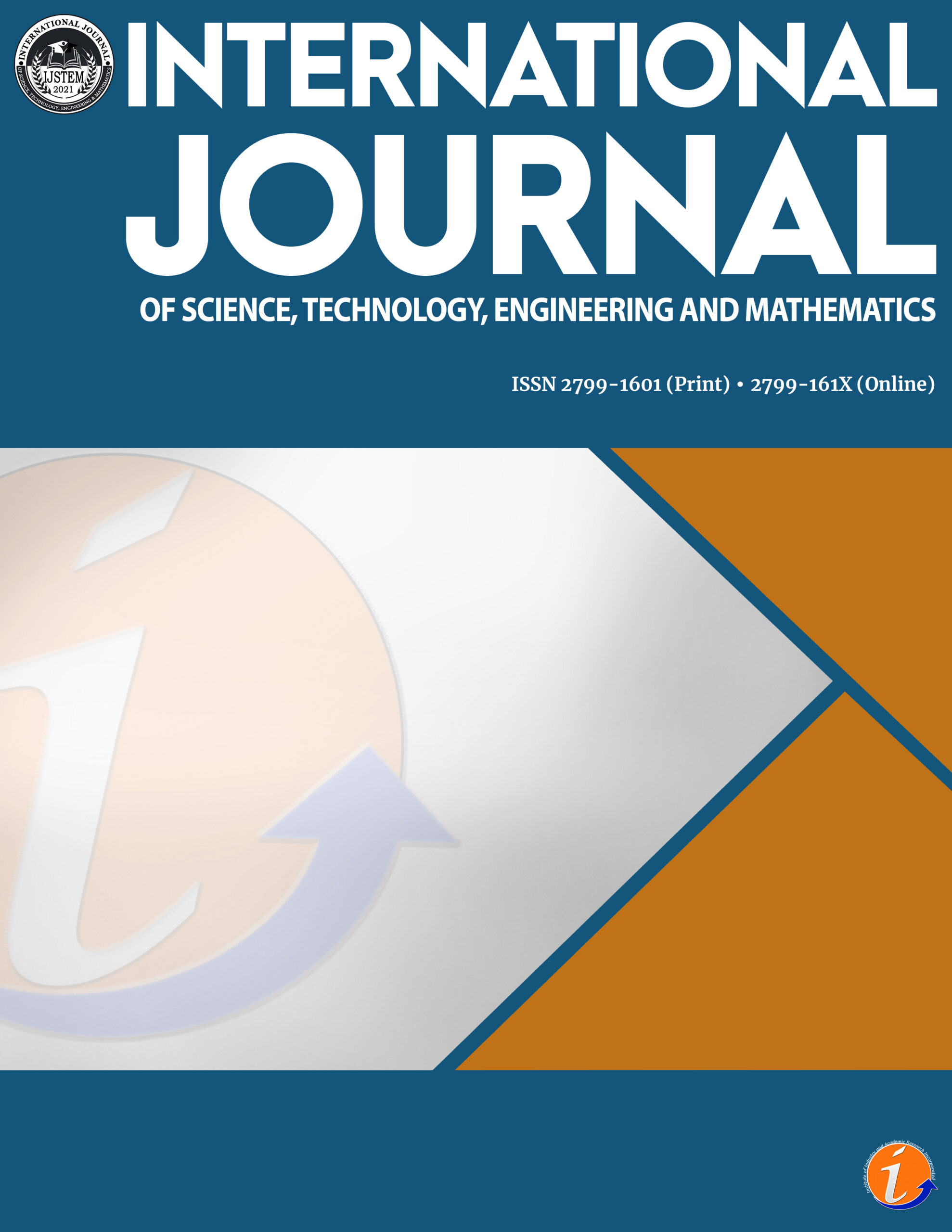The study utilized descriptive-developmental research design through the use of integrated, adapted, and expert-validated survey questionnaires, pretest and posttest to find the effects of self-designed problem-based infographic material as supplementary learning tool in advancing the scientific knowledge of thirty (30) Grade 7 students in a public high school in San Pablo City. Modular distance learning related factors and the preferred multimedia resources of the respondents were obtained. Results showed that the problem-based learning stages – problem comprehension, curriculum exploring, and problem solving, and the infographic design elements – visual, content, and knowledge elements, were highly integrated in the developed infographic material. As to the overall acceptability of the problem-based infographic material, intellectual, life skills, and affective development were perceived to be acceptable. Scores of the respondents as to the scientific knowledge – content knowledge, procedural knowledge, and epistemic knowledge, were found to have increased after utilizing the material. Statistical tests of difference also reflected significantly on the scientific knowledge of the learners implying that the use of problem-based infographic material has improved the skills of the learners while no significant relationship to the intellectual, life skills, and affective development. This concludes that the acceptability of the problem-based infographic material partially affects the scientific knowledge of the students.
problem-based learning, infographic, scientific knowledge, modular distance learning
Fatima M. Aguilar. Corresponding author. Teacher II, Department of Education – SDO San Pablo City, San Vicente Integrated High School
Julie Fe D. Panoy. Doctor of Philosophy – College of Arts and Sciences, Associate Dean, Laguna State Polytechnic University – San Pablo City
Campus
Alrwele, N. S. (2017, September). Effects of Infographics on Student Achievement and Students’ Perceptions of the Impacts of Infographics. Journal of Education and Human Development, 6(3), 104-117. doi: 10.15640/jehd.v6n3a12
Barnes & Noble College. (2016). Getting to know Gen Z: Exploring middle and high schoolers’ expectations for higher education. Retrieved from https://www.bncollege.com/wp-content/uploads/2018/09/Gen-Z-Report.pdf
Basco, R. O. (2020). Effectiveness Of Science Infographics In Improving Academic Performance Among Sixth Grade Pupils Of One Laboratory School In The Philippines. Research in Pedagogy, 10(2), 313-323. doi:10.5937/IstrPed2002313B
Chamsai, P., & Chanchusakun, S. (2020). The Effects of the Problem-Based Learning with Infographics on the Mathematical Communication Ability of Fourth Grade Students. 12(2).
Drăghicescu, L. M. (2014). Application of Problem-Based Learning Strategy in Science lessons – Examples of Good Practice. Procedia – Social and Behavioral Sciences, 297 – 301. doi:10.1016/j.sbspro.2014.08.245
Edith Cowan University. (n.d.). Retrieved January 19, 2022, from https://intranet.ecu.edu.au/learning/curriculum-design/teaching-strategies/problem-based-learning
Gallicano, T. D., Ekachai, D. G., & Freberg, K. (2014). The infographics assignment: A qualitative study of students’ and professionals’ perspectives. Public Relations Journal, 8(4).
Gormally, C. (2012). Developing a Test of Scientific Literacy Skills (TOSLS): Measuring Undergraduates’ Evaluation of Scientific Information and Arguments. CBE—Life Sciences Education, 364-377. doi:10.1187/cbe.12-03-0026
Gueta, M. F., & Janer, S. S. (2021). Distance Learning Challenges on the Use of Self-Learning Module. United Internation Journal for Research and Technology (UIJRT), 2(7). doi:i7/UIJRTV2I70010
Jufrida, J. (2019, December). Scientific literacy and science learning achievement at junior high school. International Journal of Evaluation and Research in Education (IJERE), 8(4), 630~636. doi:10.11591/ijere.v8i4.20312
K to 12 Curriculum Guide for Science. (2016).
Lu, M. (2020, April). Exploring Visual Information Flows in Infographics. ACM. doi:https://doi.org/10.1145/3313831.3376263
Mayer, R. E. (2014). Cognitive theory of multimedia learning. In R. E. Mayer, The Cambridge handbook of multimedia learning (pp. 43-71). Cambridge University Press. doi:https://doi.org/10.1017/CBO9781139547369.005
MLESF. (2021). Modified Learner Enrolment and Survey Form.
Nassaji, H. (2015). Qualitative and descriptive research: Data type versus data analysis. Language Teaching Research, 19(2).
Nicholas, A. J. (2020, January 1). Preferred Learning Methods of Generation Z. Digital Commos @ Salve Regina University. Retrieved from https://digitalcommons.salve.edu/fac_staff_pub
Overton, T. (2016). Context and Problem-based Learning. New Directions in the Teaching of Physical Sciences. doi:10.29311/ndtps.v0i3.409
Ozdamli, F., & Ozdal, H. (2017, December 19). Developing an Instructional Design for the Design of Infographics and the Evaluation of Infographic Usage in Teaching Based on Teacher and Student Opinions. EURASIA Journal of Mathematics, Science and Technology Education, 4(4), 1197-1219. doi:https://doi.org/10.29333/ejmste/81868
Parveen, A., & Husain, N. (2021, August). Infographics As A Promising Tool For Teaching And Learning. Journal of Emerging Technologies and Innovative Research (JETIR), 8(8). Retrieved from https://www.jetir.org/papers/JETIR2108322.pdf
PISA. (2015). PISA 2015 Draft Science Framework. Retrieved January 19, 2022
PISA. (2018). PISA 2018 Assessment and Analytical Framework.
Silva, A. B. (2018, April 20). Problem-based learning: A proposal for structuring PBL and its implications for learning among students in an undergraduate management degree program. Revista de Gestão, 25(2), 160-177. doi:https://doi.org/10.1108/REGE-03-2018-030
Simbulan, N. P. (2020). The Philippines – COVID-19 and Its Impact on Higher Education in the Philippines. The Head Foundation. Retrieved from https://headfoundation.org/2020/06/04/covid-19-and-its-impact-on-higher-education-in-the-philippines/
Siricharoen, W. V., & Siricharoen, N. (2015, May). How Infographic Should Be Evaluated? ICIT 2015 The 7th International Conference on Information Technology. doi:10.15849/icit.2015.0100
Siricharoen, W. V., & Vinh, P. C. (2016). Question matrix method according to divided dimensions of infographics evaluation. Personal and Ubiquitous Computing, 21(2), 219-233. doi:10.1007/s00779-016-0988-7
Wicaksono, R. S. (2019). Implementation of Problem Based Learning Combined With Think Pair Share In Enhancing Students’ Scientific Literacy and Communication Skill Through Teaching Biology in English Course Peerteaching. Journal of Physics: Conference Series. doi:10.1088/1742-6596/1227/1/012005
Won, J. (2018). Interactive Infographics and Delivery of Information: The Value Assessment of Infographics and Their Relation to User Response. Archives of Design Research, 31(1), 57-69. doi: https://doi.org/10.15187/adr.2018.02.31.1.57
Cite this article:
Aguilar, F.M. & Panoy, J.D. (2022). Infographic material as supplementary learning tool in advancing scientific knowledge of modular distance learners. International Journal of Science, Technology, Engineering and Mathematics, Volume 2 Issue 4, pp. 114 - 131. DOI: https://doi.org/10.53378/352942
License:
![]()
This work is licensed under a Creative Commons Attribution (CC BY 4.0) International License.










